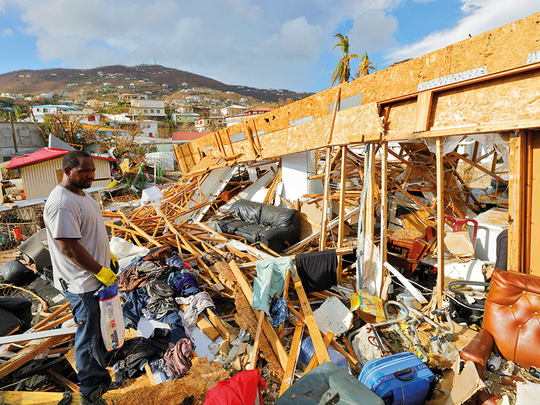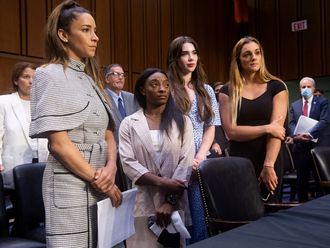
QUARTIER D’ORLIANS, St Martin: The Caribbean island of St Martin was a place of spectacular inequalities before Hurricane Irma flattened rich and poor neighbourhoods alike — but some residents now dream of a fresh start.
“A land of contrasts” was how French authorities, which run the northern half of the island devastated by last week’s Category Five hurricane, described it in a 2016 report.
Crammed into an island not much bigger than Manhattan are not only two countries — the southern half is Dutch — but also billionaires living cheek by jowl with impoverished illegal immigrants.
US President Donald Trump is among the super-rich who own property on the island, while six in 10 of his neighbours on the French side receive government handouts.
Humble wooden households were reduced to tinder, but luxury mansions were not spared either. The same phrase is now on the lips of many residents: “Everybody’s equal now.”
In the Quartier-d’Orleans, one of the poorest corners of the island where shacks with corrugated iron roofs were ripped open like tin cans, mother-of-three Nicaise Jasaron imagined a new and improved St Martin.
The retail worker reeled off a list of complaints about life before the hurricane: overcrowding, soaring property prices, immigration from other islands that she says brought drugs, guns and prostitution.
“In any case, the island will be less crowded,” she said.
St Martin’s population tripled during a 1980s construction boom — but up to 1,000 people have been leaving a day since the storm, many having lost their livelihoods on an island almost entirely dependent on tourists drawn to its pristine beaches and duty-free shopping.
With the reconstruction to come, “this is maybe a chance for us to have more work, to buy some land maybe,” said Jasaron, who has never been able to afford to buy a home.
Crossing the border to the Dutch side Sint Maarten, however, Interior Minister Ronald Plasterk suggested the poorest would be at a disadvantage after Irma, yet again.
“The differences have grown even bigger due to the storm, because the best buildings have relatively less damage than areas in the Middle Region of Philipsburg which is a workers’ area with low quality homes.”
This is, in any case, in part a tale of two islands: visitors to St Martin, home to a total of some 80,000, often comment on the stark difference between the French and Dutch sides.
French St Martin is less developed than Sint Maarten, which has clusters of shopping centres and casinos and sees most of the traffic from American cruise ships.
Compared with per capita income of $66,800 on the Dutch side in 2014, authorities put the equivalent figure on the French side at 14,700 euros ($17,500) in 2010.
As with most of the islands that dot the Caribbean, the cost of living is relatively high because most consumer products are imported.
But just as Irma made no distinction between rich and poor in smashing everything in its path, the hurricane wreaked havoc on the French and Dutch sides alike.
In Terres Basses on the French side’s western tip — home to Trump’s villa — the clean-up has yet to begin.
“We’re waiting for the insurance to look at the damage that’s been done,” says Greg Hilaire, concierge at one luxury property surrounded by high walls and CCTV cameras.
“In this neighbourhood, 95 per cent of the villas were hit, even destroyed,” said an estate agent at Carimo, which specialises in seven- and eight-figure luxury property sales.
The realtor, who gave his name only as Gerald, said he doubts that the devastation will reduce the inequality, but suggested authorities may finally build better social housing and stamp out the slum landlords operating in poor districts.
With all the rebuilding that is needed, local lifelong learning adviser Roger Annerose urged the construction sector to invest in training residents — many of whom might previously have relied on state handouts.
This way, he suggested, “they might finally have a career”.













